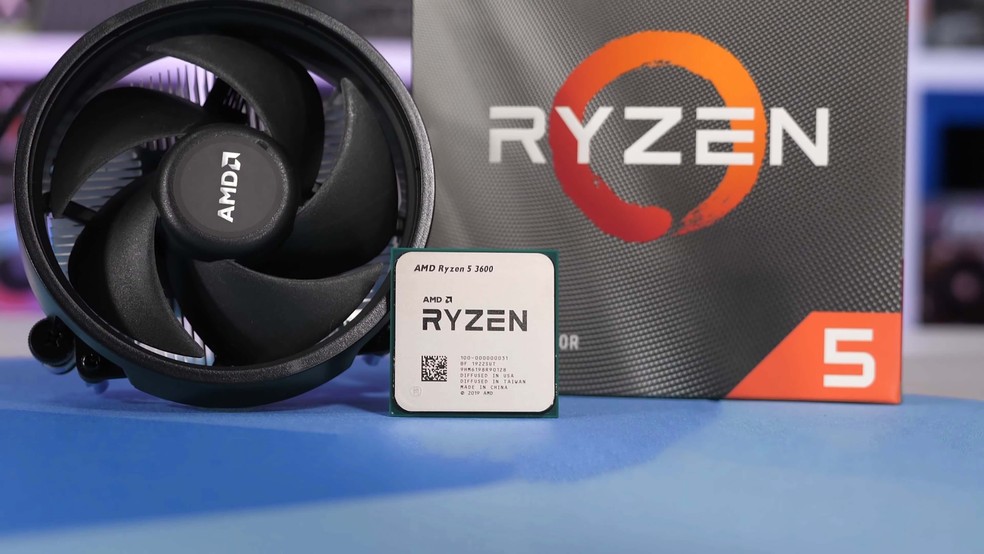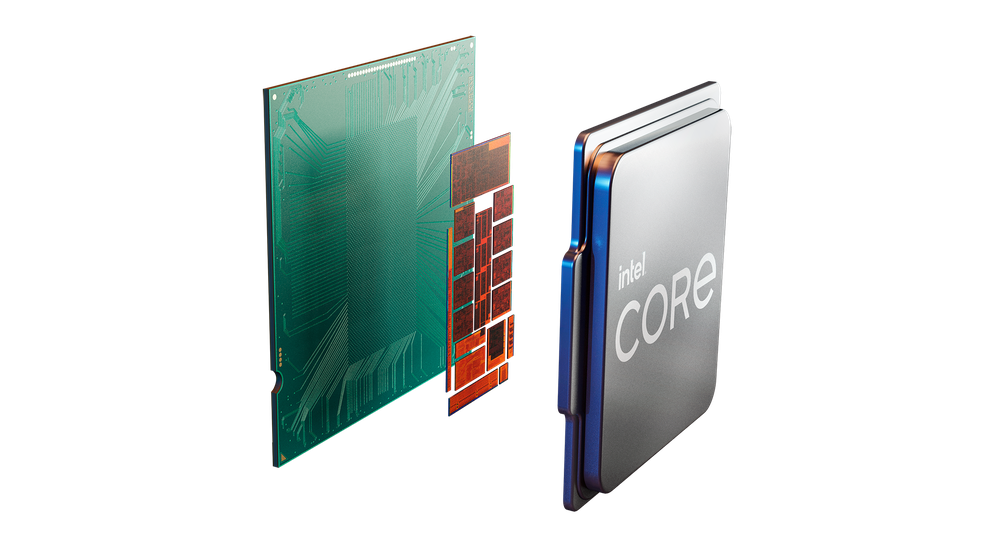Ryzen 5 3600 and Core i5 11400 are two mid-range processors from AMD and Intel among the best choices on the market today for those looking to build a gamer PC in 2021 without spending so much on a high-end CPU. Both are hexa-core and reach speeds that exceed the 4 GHz mark with turbo, besides offering support for peripherals with PCIe 4.0.
The Core i5 11400F, for example, is more stripped down and cheaper, since it comes without an integrated video card, while the Ryzen 5 3600X offers slightly higher speeds and is relatively more expensive. Below, we compare in detail the datasheets of the two products, their specifications, gaming performance, and the cost-benefit ratio between the Intel and AMD platforms.
Intel Core i5 11400 vs. AMD Ryzen 5 3600
| Specifications | Intel Core i5 11400 | AMD Ryzen 5 3600 |
|---|---|---|
| Launch | March 2021 | July 2019 |
| Price | from $169 | from $199 |
| Cores/Threads | 12/6 | 12/6 |
| Speed | 2.6 to 4.4 GHz | 3.6 to 4.2 GHz |
| cache memory | 12 MB in L3 | 32 MB in L3 |
| RAM | DDR4 up to 3200 MHz, dual-channel | DDR4 up to 3200 MHz, dual-channel |
| Overclock | No | Yes |
| Integrated video card | Intel UHD Graphics 730 | – |
| TDP | 65 Watts | 65 Watts |
| Socket | LGA1200 | AM4 |
Specifications

The two products from AMD and Intel are quite similar, even in the specifications. Both offer six cores and 12 threads, allowing both the Ryzen 5 and Core i5 to behave like 12-core CPUs in applications that support 12-core processing.
There are differences in terms of speeds, with Intel offering a base clock of 2.6 GHz and a turbo that speeds the processor to 4.4 GHz. On AMD’s side, Ryzen yields 3.6 GHz at base speed and can engage a 4.2 GHz turbo.
In the Core i5, there is a total of 12 MB of level 3 (L3) cache memory, while in the Ryzen 5 3600 it is 32 MB. This configuration is a type of internal processor memory that serves to store information that the CPU may need in the short term, reducing response times and ensuring higher performance.
Another relevant specification for the platforms is RAM. AMD’s Ryzen recognizes DDR4 memory up to 3,200 MHz in dual-channel. Intel’s Core i5 repeats the same profile, accessing two simultaneous channels of DDR4 also at 3.2 GHz.
Performance
Tom’s Hardware has produced tests that compare the two processors directly and has measured results that overall give the Core i5 a win. Being newer, the processor benefits from a more efficient architecture than its rival, which explains the conclusion.
In Borderlands 3, the Core i5 11400 can deliver a minimum of 123.5 frames per second running the game in Full HD, while the Ryzen 5 3600 goes to 111.5 fps. The tests were conducted with the same memory, storage, and graphics card as a way to isolate as much as possible discrepancies between the two processors.

Red Dead Redemption 2 was the game where the two processors achieved the closest results, although, in the end, the advantage was in Intel’s hand. Running Rockstar’s open-world in Full HD, the Core i5 system achieved 100.2 fps minimum, while the Ryzen 5 reached 93.3 frames per second.
This kind of result is repeated in other comparisons. The UserBenchmark site, which aggregates performance comparisons made by regular users, indicates that the Core i5 11400 is up to 7% better than the Ryzen 5 3600 in games, with average results up to 20% better.
Resources
Although performance comparisons between the two processors show an advantage for Intel, the truth is that in everyday use of the two products these differences may be too small to notice. In light of this, some important differences come into play regarding the features and functionality built into the two processors.

If you are looking for a CPU for a home PC that is more generic and not so focused on gaming, the Core i5 may be a better choice, since the chip has an integrated video card, capable of controlling more than one monitor and even playing 4K video. For desktops focused on study and work, the Core i5 is a more cost-effective choice, because it makes it unnecessary to invest in a dedicated graphics card.
The Ryzen 5 3600 is more gamer-oriented. In addition to not having a built-in graphics card – which forces the investment in an additional GPU – there is overclocking support on AMD’s platform. Thus, more advanced users, and with access to temperature control systems, as well as a good quality motherboard, can try to artificially speed up the processor to improve its performance.
Consumption
The two chips occupy the same TDP range, at 65 Watts, which indicates that their power and cooling needs should be quite similar when operating at maximum performance conditions (and without overclocking, in the specific case of Ryzen).
TDP is an index of the total energy that the processor does not use when pushed to the limit of its capabilities, indicating how much heat the CPU needs to dissipate into the environment to keep running properly.
Motherboard
The two processors require different motherboards to function. While AMD’s platform is built around the AM4 socket and with several different chipsets, Intel’s platform is built around the LGA1200 socket.
Pricing and Availability
Both processors are easy to find and can be purchased in the market for starting at $199 for Ryzen and $169 for Intel. The Core i5 is more expensive but can offer superior performance and includes a built-in video card.
This post may contain affiliate links, which means that I may receive a commission if you make a purchase using these links. As an Amazon Associate, I earn from qualifying purchases.

